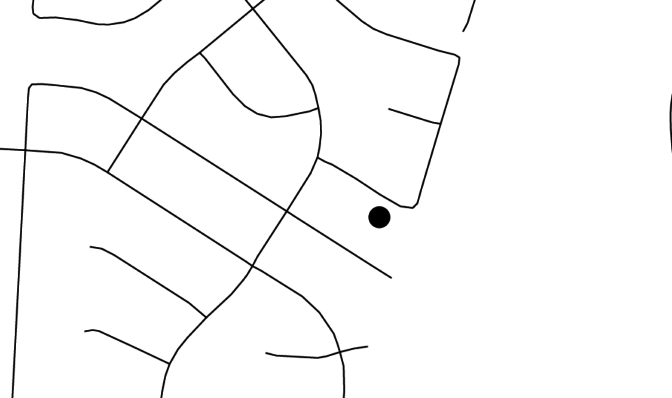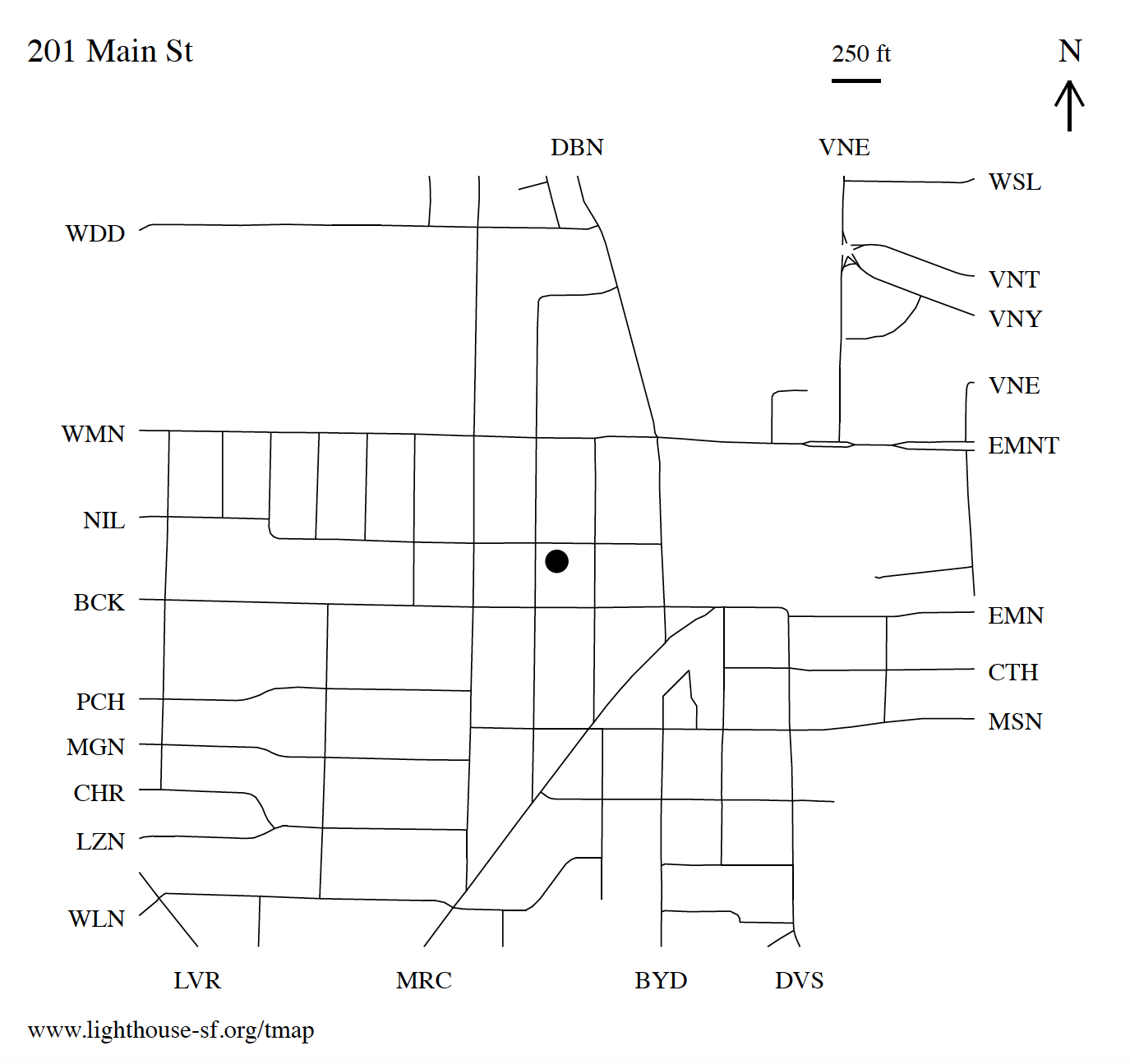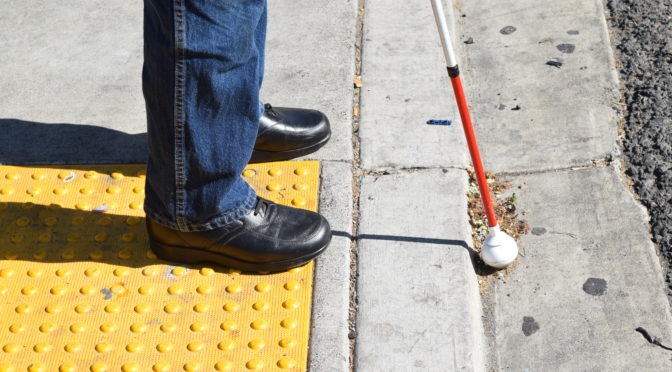In January, LightHouse started offering TMAP — on-demand tactile street maps — for order at our Adaptations Store (1-888-400-8933). We have been hearing some amazing stories about how our maps are being used, so we wanted to share them with our mapping community.
Sarah McIntyre has fond childhood memories of San Francisco. These trips were all defined by one nostalgic artifact: a giant, foldable street map from AAA. “My mother taught me to read maps,” Sarah says. “She was always the navigator.” And though most families now navigate with digital maps, Sarah fondly remembers the hard copies: well-loved, frayed on the edges, markings revealing every adventure past and future.
Today Sarah is an orientation and mobility instructor at LightHouse, and when she teaches blind students, she stresses this point: navigating by smartphone works until it doesn’t — until you’re out of service, or the environment is so loud that the speech from your phone is too hard to hear. Even with endless technology at our fingertips, there’s no match for a real map.
This is why, when our Media and Accessible Design (MAD) Lab started creating automated tactile maps (TMAPs) this year, Sarah immediately adopted the on-demand maps as a learning tool for her students.
Working out of Solano County, Sarah finds that towns like Vacaville – where car culture reigns supreme – can be hard for pedestrians to picture in the mind.

Sarah recently used TMAP to confront just this sort of dilemma with a student living on a street that was a circular loop – but not a perfect circle. Using words to explain the tricky extra turn to lead the student back to her doorstep was proving too difficult. New to America, the student had only been in the United States for three years, and mobility was a challenge. It would be a crucial step forward for her to master her home neighborhood.
Normally, Sarah would have confronted this challenge by taking out her DIY mapping kit: a roll of heavy duty aluminum foil, various hand embossers and loose Wikki Stix, among other odds and ends. But hand-crafting a tactile diagram is a big effort to explain one confusing intersection. With TMAP, Sarah had a touchable diagram of the strange circular block printed immediately.
Another student had Sarah print his first TMAP of the area around Gold’s Gym in downtown Vacaville. As luck would have it, the gym turned out to be smack dab in the middle of downtown, which meant that this map would be a particularly good one; useful for finding more than just the gym.
Sarah and her student headed downtown with the map, starting from the center and getting to know the outlying streets –– turning the map with each turn of the corner to navigate methodically, non-visually, through Vacaville’s old town center.

For her student, Sarah says, the map was a revelation. “He didn’t know how to read a map visually, let alone non-visually,” she points out. “That’s a huge emotional thing for people, to actually gain a new skill that you thought required eyesight.” Now, she says, he is talking about traveling for work and getting to know new cities with a new level of confidence.
Teaching her students to use the map key has also been a huge boost for their mobility. Not only does each TMAP come with a prominent compass rose, but the key lists the running direction (e.g. North-South or East-West) of each street – all in large print and braille.
“I love braille,” says Sarah. Usually when someone who isn’t blind professes such a thing, they’re not actually familiar with the writing system, or at best, a romantic. But Sarah is serious. “Audio is very linear, and you need the ability to stop moving forward, to control the pace you’re reading at and backtrack fluidly and with braille you have that option. Braille works the same way vision does in that sense.”
Sarah tells her students they don’t need to know braille in order to benefit from the TMAPs, but it’s sure a valuable skill to develop.
Get your TMAP today
To order a map, call our product specialists at 1-888-400-8933 and specify the street address of the map you’re interested in receiving. Within two business days we’ll ship you your map, or make it available for pick up at the Adaptations Store (1155 Market St., 10th Floor, San Francisco, CA). Each TMAP package is $19.99 per address.
What’s in the package?
- You will receive 3 map versions printed at simple, moderate and dense map scale ratios
- A tactile map key
- An introductory page
- All materials are printed on 11” X 11.5” sheets of embossed paper and include ink / large print labels in addition to braille
Click here to learn more more about TMAP.

